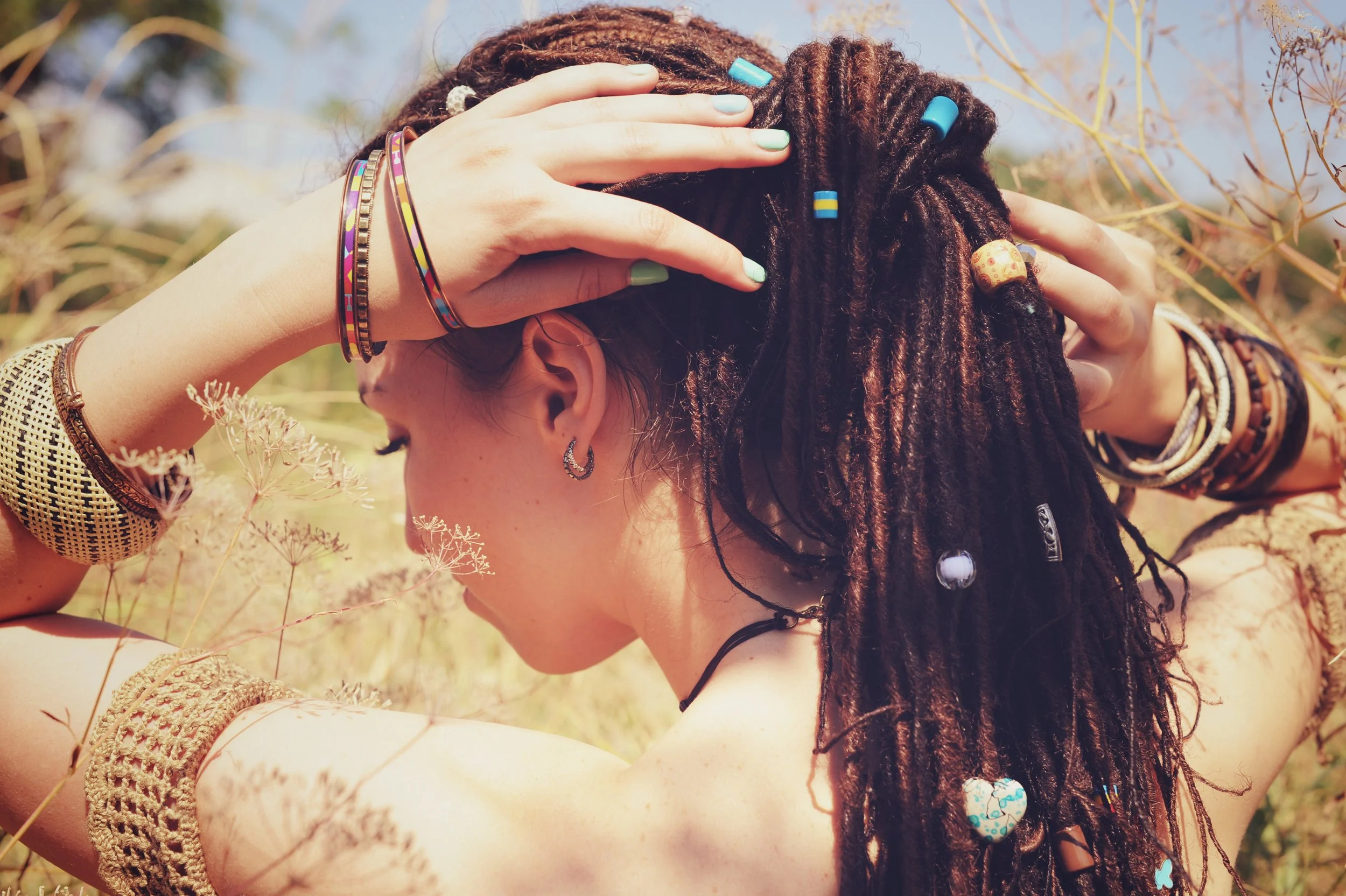Understanding Malassezia Yeasts and Their Impact on Scalp Health in People with Dreadlocks
Introduction
Malassezia is a genus of naturally occurring yeasts that live on human skin, particularly in areas rich in sebaceous (oil) glands. While these microorganisms are a normal part of the skin’s microbiome, they can sometimes overgrow and contribute to scalp and skin conditions like dandruff, seborrheic dermatitis, and folliculitis.
For individuals with dreadlocks, managing scalp health can be particularly important, as factors like oil buildup, limited airflow, and certain hair products can create an environment where Malassezia thrives. Understanding these yeasts—especially M. globosa, M. sympodialis, and M. restricta—can help in maintaining a balanced and healthy scalp.
The Malassezia Genus: Key Players in Scalp Health
The Malassezia genus includes multiple species, but three are particularly relevant when it comes to scalp health:
M. globosa – Known for breaking down sebum (scalp oils) into free fatty acids, some of which can irritate the skin and lead to dandruff and seborrheic dermatitis.
M. sympodialis – Less commonly associated with dandruff but plays a role in inflammatory skin conditions like eczema.
M. restricta – Found in high numbers on dandruff-prone scalps and is strongly linked to seborrheic dermatitis.
These yeasts are lipid-dependent, meaning they rely on oils to survive. This is why they are most abundant in areas with more sebaceous gland activity, such as the scalp.
How Malassezia Affects the Scalp and Skin
While Malassezia is typically harmless, its overgrowth can disrupt the skin barrier and trigger conditions such as:
Dandruff: Often linked to M. globosa and M. restricta, dandruff occurs when Malassezia yeasts break down oils, producing oleic acid, which can cause irritation and increased skin cell turnover.
Seborrheic Dermatitis: A more severe form of dandruff, presenting as inflamed, scaly, and sometimes itchy patches on the scalp, face, or chest.
Folliculitis: When Malassezia penetrates hair follicles, it can cause itchy, acne-like bumps on the scalp, shoulders, or back.
For people with dreadlocks, these conditions can be worsened by excess oil, lack of proper washing routines, and product buildup.
Why Malassezia Thrives in Dreadlocks
Dreadlocks create a unique environment that can influence Malassezia growth due to:
Oil and Product Buildup: Because Malassezia feeds on lipids, heavy use of oils, butters, and waxes can contribute to its overgrowth.
Limited Airflow and Moisture Retention: Dreadlocks take longer to dry, and trapped moisture can create a microclimate where yeast flourishes.
Infrequent Washing: While it’s a myth that dreadlocks should never be washed, irregular cleansing routines can allow yeast populations to grow unchecked.
Balancing Malassezia for a Healthy Scalp
Managing Malassezia is about creating a balanced scalp environment, rather than completely eliminating the yeast. Here’s how:
Regular Washing: Using a residue-free shampoo at least once a week helps remove excess oils and debris.
Antifungal Shampoos: Shampoos containing ingredients like ketoconazole, zinc pyrithione, or selenium sulfide can help regulate Malassezia populations.
Thorough Drying: Ensuring dreadlocks dry completely after washing prevents excess moisture retention, which can encourage yeast overgrowth.
Scalp Exfoliation: Occasionally using a gentle scalp scrub or massager can help remove dead skin cells and prevent buildup.
Product Ingredients That Help or Harm
Certain ingredients can either support or disrupt scalp health when managing Malassezia.
Helpful Ingredients:
Tea Tree Oil: Natural antifungal properties.
Apple Cider Vinegar: Helps balance scalp pH and reduce yeast growth.
Zinc Pyrithione: A proven antifungal that targets Malassezia.
Salicylic Acid: Helps exfoliate the scalp and remove buildup.
Potentially Problematic Ingredients:
Heavy Oils (Coconut Oil, Shea Butter): Can provide a food source for Malassezia if used excessively.
Waxes and Petroleum-Based Products: Can contribute to buildup and scalp irritation.
Fragrances and Sulfates: May disrupt the scalp’s microbiome, worsening inflammation.
Conclusion
While Malassezia is a normal part of the skin’s ecosystem, an overgrowth can lead to scalp issues, particularly for those with dreadlocks. By understanding how these yeasts function and making informed choices about scalp care and product use, it’s possible to maintain a healthy balance and prevent common scalp conditions.
References
Ashbee HR, Evans EG. Immunology of Diseases Associated with Malassezia Species. Clin Microbiol Rev. 2002;15(1):21-57.
Saunders CW, Scheynius A, Heitman J. Malassezia fungi are specialized to live on skin and associated with dandruff, seborrheic dermatitis, and folliculitis. Cold Spring Harb Perspect Med. 2012;2(8):a008294.
Gupta AK, Batra R, Bluhm R, Boekhout T, Dawson TL Jr. Skin diseases associated with Malassezia species. J Am Acad Dermatol. 2004;51(5):785-798.
DermNet NZ. Malassezia folliculitis. (DermNet NZ)
Cabanes FJ. Malassezia yeasts in dandruff and seborrheic dermatitis. Front Cell Infect Microbiol. 2021;11:806132.

